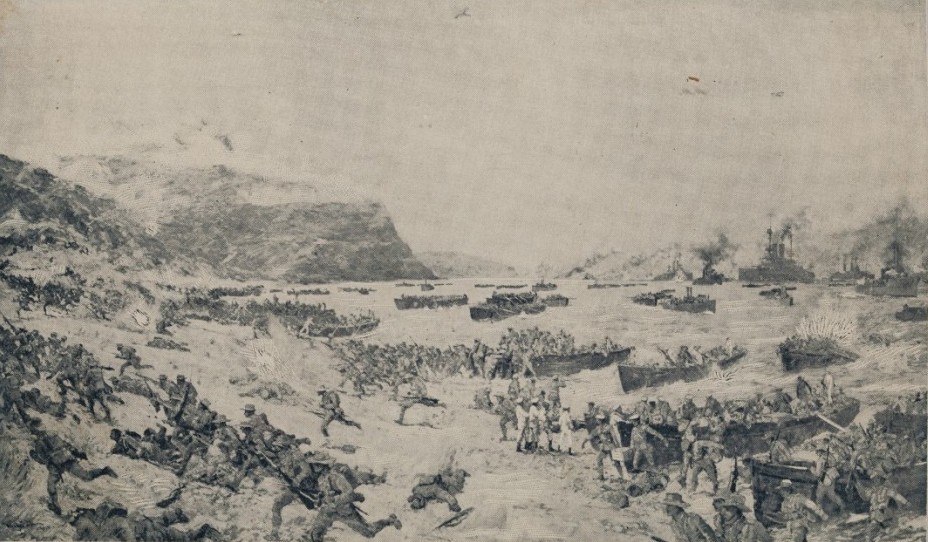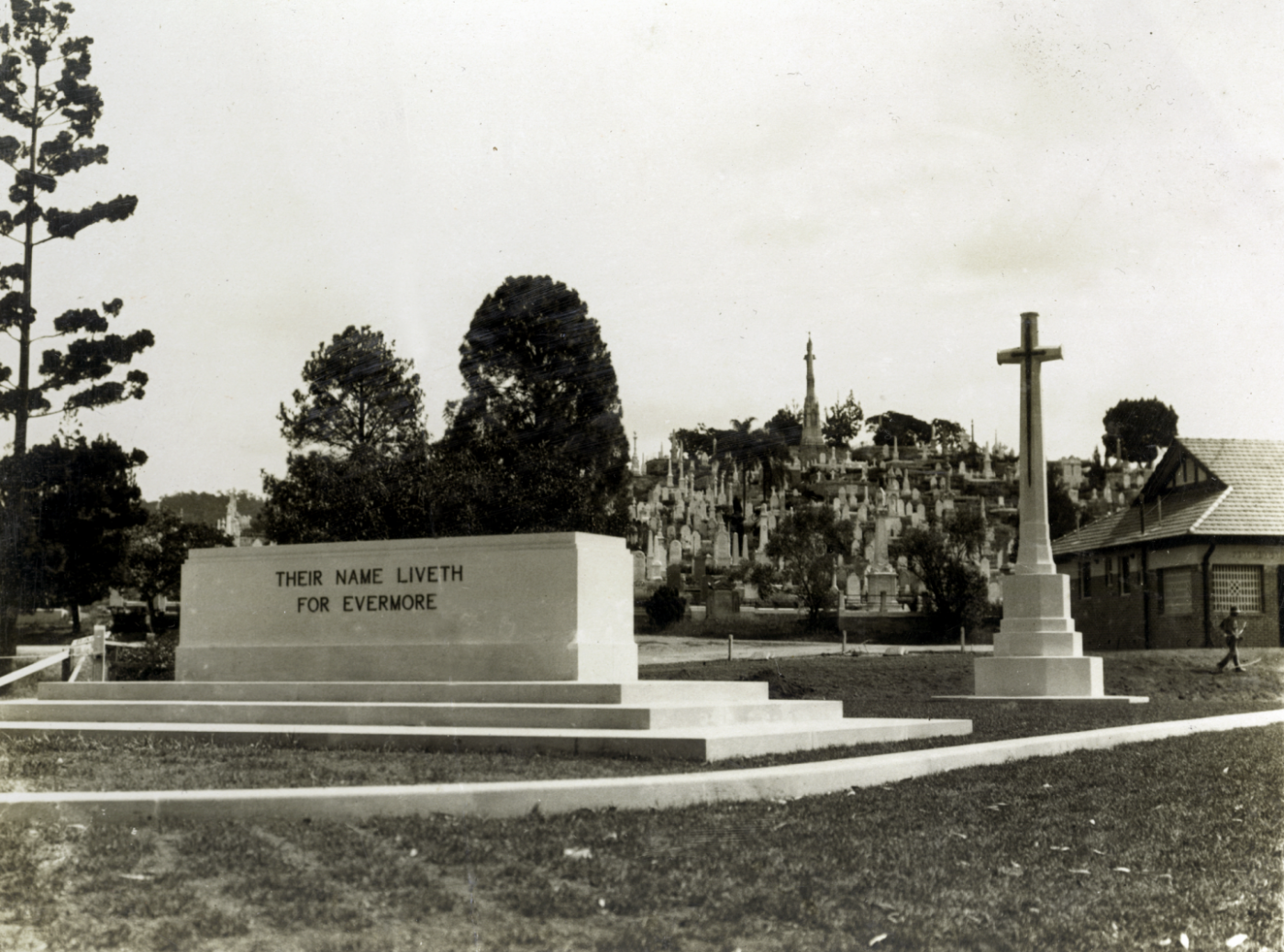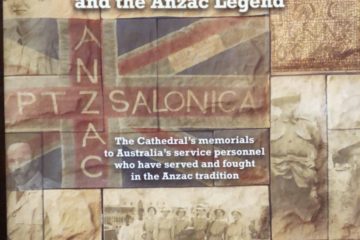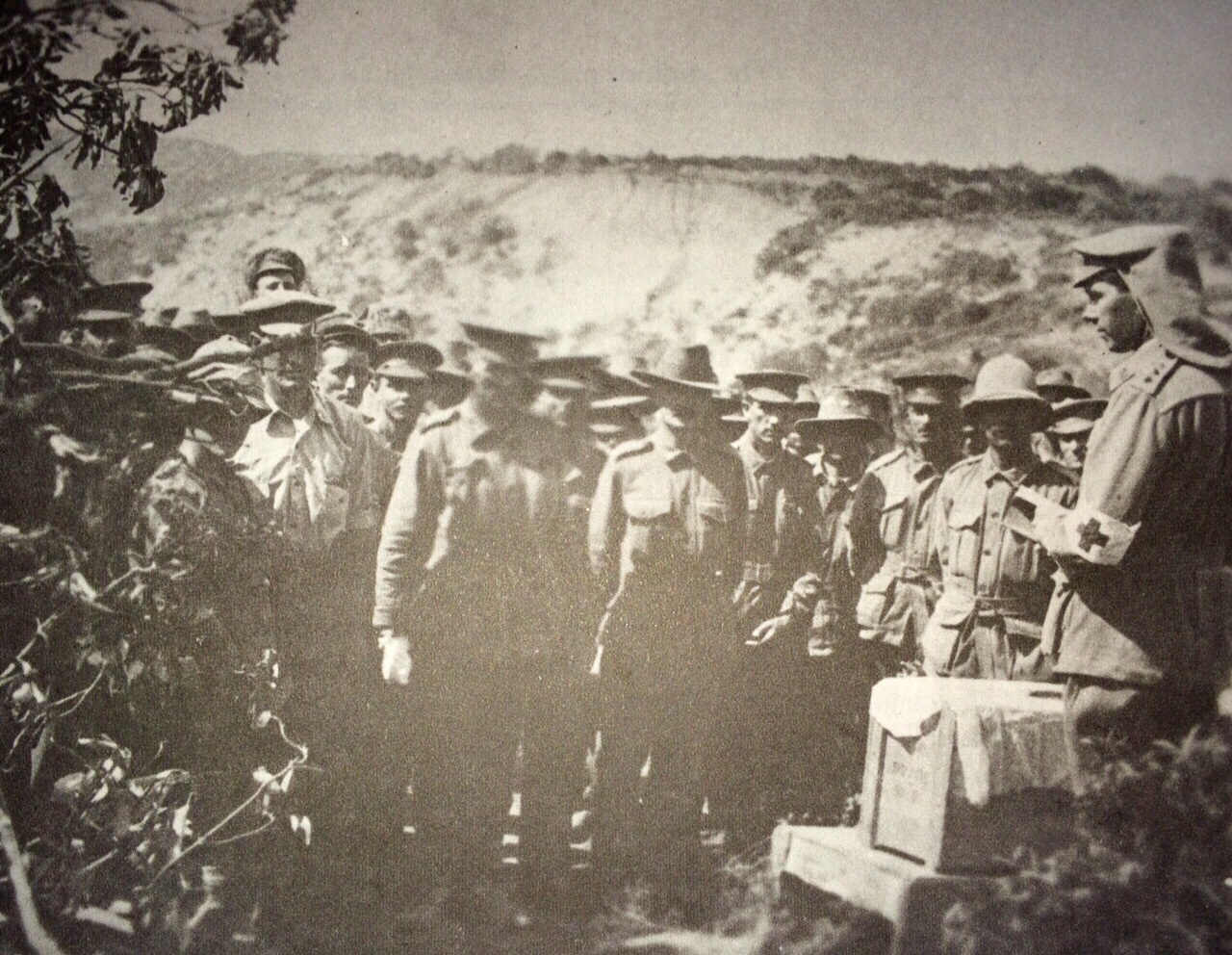ANZAC Day No. 9

ABOVE: This image of the Charles Dixon painting “The Landing at Gallipoli” was reproduced in the Anzac Day Commemoration Committee’s 1921 annual year book.
FOR LIFE AND LIBERTY.
“ALL THAT THEY HAD THEY GAVE.”
GLORIOUS MEMORIES OF ANZAC.
NINE years have flown since a comparatively small body of the soldier sons of Australia and New Zealand stirred the world and fired the imagination of friend and foe alike by a deed of heroism unparalleled in history.
In a short 24 hours — short in time, but long in the agony of their suffering — on the rugged cliffs and in the unknown scrub of Gallipoli, they showed that a new power had arisen, that a new spirit — that of the British bulldog grip, intensified by the open life of southern lands — was abroad, fighting for justice.
For themselves they won an heroic title, and for us and for those of their number who survived, a new charter of life and liberty.
ANZAC Day has been marked as one for solemn celebration of the deeds of Australia’s valorous sons, who, though an ordeal of blood, fire, and suffering, won for their country a place among the great nations of the world.
From the first inception of the celebration the keynote has been the solemn remembrance before Almighty God of the heroic dead.
Year by year the story must be told of the heroism of Australia’s sons, who, in the darkness before the dawn of April 25, 1915 made a nation’s name on the shores of the Aegean Sea.
The story must be retold, not “lest we forget”, but for the sake of the younger generation, that they may learn and remember that by then sacrifice these men — these “Anzacs”— gained for us a new charter of national life and liberty.
By an accident the boats carrying Australia’s warriors headed a little to the north of the beach on which they were intended to land.
The Turks were not expecting them, but they were detected, and a battalion of the enemy, doubling along the beach to intercept them, concentrated heavy rifle on the approaching boats, even from as close a range as 50 yards.
Many of our men were killed in the boats, but the dead men’s oars were seized by survivors, the boats were forced on to the shingle, their living loads sprang into the water, waded ashore, charged with fixed bayonets, and, scattering the Turks, followed them into, the unknown — up and up the scrub-covered cliffs, into ambushes, beyond snipers under cover, who shot them in the back, on to single combat — combats that (must ever remain unrelated, for East met West face-to-face of a sudden — in the dark, and often both went down.
Daylight came, and undaunted, our boys pushed on.
Meanwhile the Turkish howitzers had found the beach, and field guns raked the still approaching boats with shrapnel, and stilled them with high explosives.
These reinforcements were taken in flank by every gun on Gaba Tepe, and by 10 o’clock the Turks were able to bring up enough men to prepared positions to hold up the advance.
Scattered parties of our men, in their enthusiasm, had gone too far in the scrub, and were cut off and killed.
BULLDOG TENACITY.
Still more Turks came up, accompanied by big field artillery, but our boys held on to what they had won, although faced by twice their numbers.
For four hours the Turks, fresh from superior positions, again and again attacked our disorganised line of breathless men, who had not yet had time to dig in.
But the guns on our ships opened on them, and our scattered parties in the scrub rolled the enemy back again and again.
More of the army corps landed, and climbed the cliffs to join their fellows through an ever-growing fire that lit the scrub, and burned the wounded and the dead.
Night fell, but brought no rest. Men worked digging in till they dropped asleep, Turks charged, they woke, fired, and dug again.
Before morning the Australians had not men enough left to hold the line, and orders were issued to fall back to a shorter line.
But in the uproar a message came from Sir Ian Hamilton [ Ian Standish Monteith Hamilton ] to say that help was at hand, and that an Australian submarine had entered The Narrows and had sunk a Turkish transport off Chanuk [ Çanakkale ].
This word of victory, coming to men who thought that their efforts had been all in vain, had the effect of the arrival of a fresh brigade. They rallied, reascended the hill, bore the news to the firing line, the new line was made good, and the rest of the night was a continuous victory for the weary ones in the scrub.
And thus passed, nine years ago, the 21 hours that we now celebrate as Anzac Day in honour of these heroes.
“UNDYING FAME”
Anzac Day owes its inception to a suggestion by Mr. T.A. Ryan [ Thomas Augustine Ryan ] to Mr. A.J. Thynne [Andrew Joseph Thynne ], chairman of the State Recruiting Committee, that the day of the landing should be suitably commemorated.
The Recruiting Committee took the matter up, with the result that a meeting was called by the-then Mayor of Brisbane (Alderman G. Down) [ George Down ], at the Exhibition Hall on January 10, 1916, when the Anzac Day Commemoration was constituted.
The primary object of the committee was set out in the resolution adopted on the motion of the-then Governor (Sir Hamilton Goold-Adams) [ Hamilton John Goold-Adams ], “that the heroic action of our gallant Queensland troops…has earned for them undying fame, and deserves the fullest recognition by the people of this country.”
A second resolution moved by Major-General McCay [James Whiteside McCay ], “that…it is desirable that the first anniversary of the landing at Gallipoli shall be suitably celebrated in this State, and that the other States of Australia be invited to consider similar action”, was the first step to making the motion nationwide.
The adopted form of celebration, founded on proposals submitted by Canon Garland [ David John Garland ] in February 1916, give ample opportunity for everyone, irrespective of creed or politics, to take part in the service.
The Committee is not in favour of the day becoming an unrestricted holiday. That might lead to a day which should be observed most solemnly becoming one of amusement and sport.
But the Committee is in favour of a public holiday similar to that in New Zealand, where race meetings and sports gatherings are prohibited by legislation, and licensed promises are closed.
The Committee took an active part in the Anzac Square project; is looking after the graves of deceased soldiers in Queensland that required urgent attention — the graves on Gallipoli are under the charge of the Imperial War Graves Commission, a body that has given great satisfaction — and is aiming at making the celebration uniform throughout Australia.
ORIGIN OF THE WORD “ANZAC”.
Lieutenant-General Sir W.R. Birdwood [ William Riddell Birdwood ] wrote on December 10, 1915:
“When I took over the command of the Australian and New Zealand Army Corps in Egypt a year ago, I was asked to select a telegraphic code address for my Army Corps, and then adopted the word ‘Anzac’.
“Later on, when we had effected our landing, I was asked by general headquarters to suggest a name for the beach where we had made good our first precarious footing, and then asked that, this might be recorded, as ‘Anzac Cove’ — a, name which the bravery of our men has now made historical, while it will remain a geographical landmark for all time.”
With the restraint born of the intense tragedy of the Great War, a memorial, simple and impressive, was designed for commemorating the fallen heroes of the British race in the war cemeteries, on the battlefields, and throughout the Empire.
Under the general supervision of three eminent architects — Mr. Reginald Blomfield, Sir Edwin Luytens, and Mr. Herbert Baker — the original models were erected in the grounds of Lambeth Palace.
The memorial consists of a Cross of Sacrifice and a Stone of Remembrance.
On the front of the Cross is affixed a slender sword in bas-relief, fashioned of dull bronze, and on the altar — the Stone of Remembrance — also in dull bronze, is written, “Their name liveth for evermore”.
The first of these memorials was unveiled by the King at Terlincthun [ Terlincthun British Cemetery, Wimille, France ], in Flanders, during his pilgrimage of the battlefields in 1922.

ABOVE: Toowong’s Stone of Remembrance and Cross of Sacrifice as it looked on Anzac Day 1924. Image from the State Library of Queensland Collection.
Today a replica, fashioned of Helidon freestone, donated by the State Government, is to be unveiled by the Governor-General (Lord Forster) [ Henry William Forster ] just within the gates of Toowong Cemetery.
IN MEMORY OF ANZAC.
And the very proudest in the land
Are those whose family tree
Has its tap-root brave in some lowly grave
In far Gallipoli.
And the fittest breed, from Swan to Tweed,
That one would crave to share
Owns the gallant blood that reddened the flood,
From the Somme to Pozieres.
— J.A.P. (for the Fathers’ Association).
“The thoughts of the Queen and myself are with my people of Australia on this special day,
when they are commemorating the glorious achievements of their beloved dead.”
– This message from His Majesty the King has been received by the Deputy-Governor
(Mr. William Lennon) through his Excellency the Governor-General (Lord Forster).
— from page 5 of “The Brisbane Courier” of Friday, 25 April 1924.


